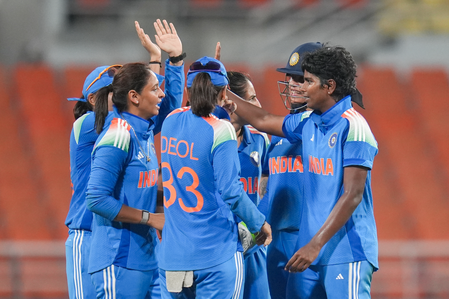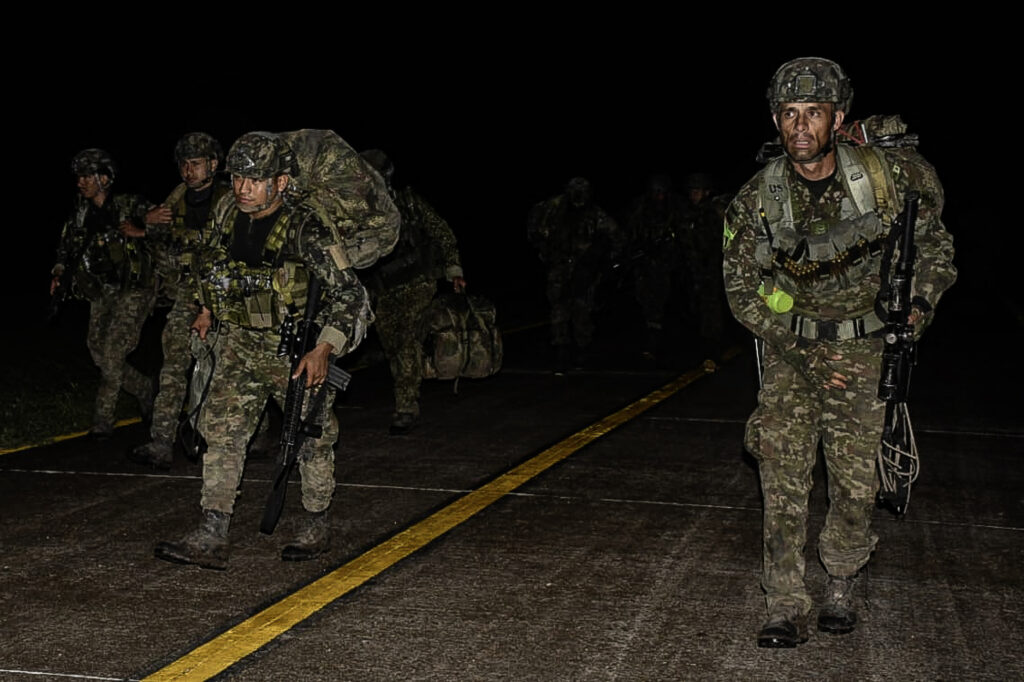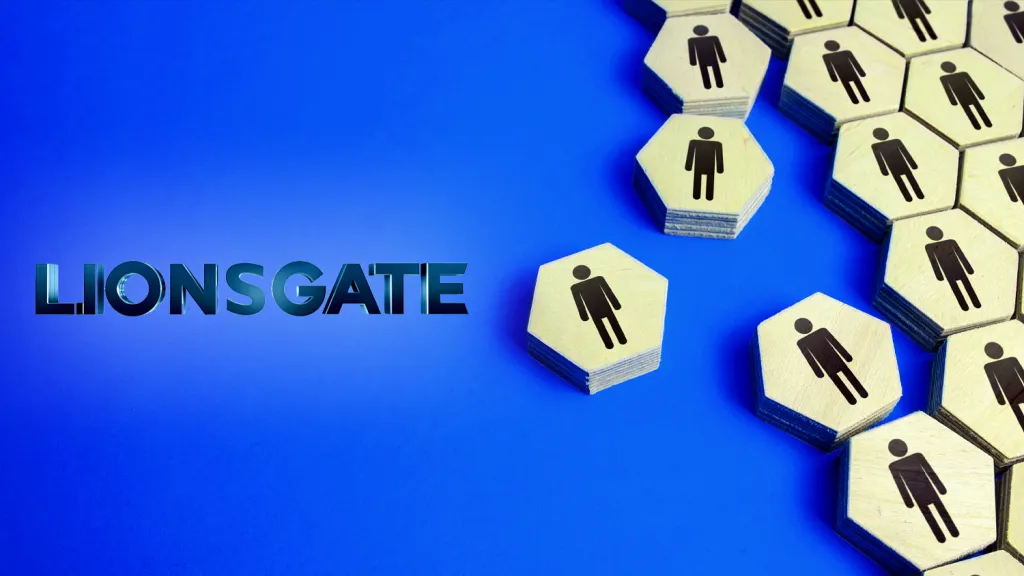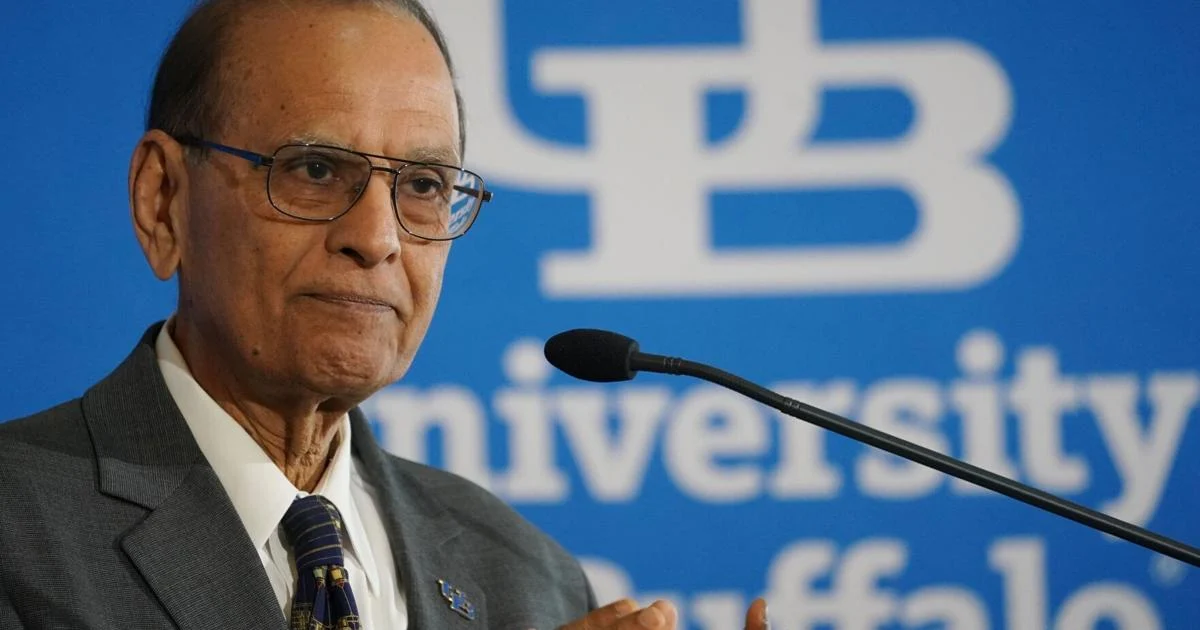
When he was growing up in a remote village in India, Satish Tripathi never imagined standing on a stage for a 14th time speaking as the leader of the University at Buffalo.
Not only did that happen, but he’s also become the longest tenured president at UB since the school joined the SUNY system in 1962.
He gave his final State of UB speech Friday inside the Lippes Concert Hall at Slee Hall with his time as UB president coming to an end following the 2025-26 school year after 15 years in the post. His background is as a computer scientist.
“What a privilege it has been to be UB’s president,” said Tripathi, UB’s 15th president and first one who’s been internationally born. “The statistician in me still asks the question … what are the odds?”
Tripathi joined UB as provost and executive vice president for academic affairs in 2004 after serving as dean of the Bourns College of Engineering at the University of California, Riverside, for seven years. He was appointed president for the university in 2011.
He’ll step down as president in July 2026 and then return to his faculty role in the School of Engineering and Applied Sciences.
Tripathi has helped significantly elevate UB’s stature as a premier public research university, helped make the university a more important player in Western New York’s economic development efforts, extended the university’s local and global reach and grown the school’s international reputation.
A former international student himself, Tripathi has also been celebrated by co-workers and colleagues for his kindness and humility, especially for someone in such a lofty position, and putting the university’s interests before his own.
During Tripathi’s presidency, UB expanded its research initiatives and tried to become more of a catalyst for the Buffalo Niagara economy by encouraging entrepreneurship and looking for ways to turn its discoveries into viable businesses and products.
Under his leadership, UB’s sponsored research expenditures increased from $157 million to $259 million. He also oversaw significant transformation of UB’s campuses, including returning the medical school back to the city’s core and the opening of numerous new buildings, labs and facilities, along with the renovation of many existing spaces on campus, most with a focus on green energy.
Over the past 15 years, UB’s institutional rankings have risen 22 spots among public universities, and 45 spots among public and private universities.
“UB is a community in the best sense of the word: a dynamic environment where we exchange ideas, debate respectfully, and come together in service of our mission of excellence,” Tripathi said.
Tripathi credited his parents for instilling a passion for education and the community of teachers, mentors and colleagues who have helped advise and guide him over the years.
Even during tough times for the school and higher education, in general, the community at UB stuck together, Tripathi said.
He’s led UB through the Covid-19 pandemic and other periods of unease and distress precipitated by local, national and international events and some of the unrest around the university setting, including at UB.
“Over the years, we have approached everything we do in a spirit of solidarity,” he said. “That fact has made my tenure as president immensely rewarding. More importantly, it has made all things possible for our great university.”
Tripathi chose in his speech to focus on a number of areas as key to the university’s success. They include developments in research, a distinguished faculty, contributing to the region’s entrepreneurship and economic development, students making their mark at UB and beyond, academic merit, improving campus infrastructure, focusing on the importance of the environment, welcoming international students, improving worldwide relationships and fostering philanthropy and service to the community.
“We are educating tomorrow’s trailblazers, bringing our expertise to bear on complex issues, and providing sustainable solutions,” he said.
Tripathi believes UB’s strength in developing as a premier research institute has come from the recognition that “we are stronger by virtue of our diverse perspectives. And that we are bound by a unifying purpose – to bring our findings to bear on the greater good.”
The latest effort comes in the development of artificial intelligence, helping make UB a global leader in this area. With faculty across 15 departments harnessing AI for public good, university researchers are harnessing AI to develop personalized medicine, cutting-edge cybersecurity and educational tools for young learners, he said.
“As you can see, our research and community collaborations are changing the world,” Tripathi said.
Outgoing UB President Satish Tripathi’s demeanor and ability to relate to people has helped him maintain the stability of the institution and grow it, even through a difficult landscape for colleges and universities.
UB has contributed to the regional economy in many ways, including the move of the Jacobs School of Medicine and Biomedical Sciences to downtown and developing the Innovation Hub and a downtown Incubator, helping to cultivate partnerships and commercialization, Tripathi said.
Through campus renovation projects, new buildings have gone up helping redefine the UB experience, classrooms have been upgraded with the latest technology to help hone research techniques in state-of-the-art labs, and residential halls have been refurbished, Tripathi said. Investments in the campus master plan have exceeded $2.5 billion.
That includes ongoing revitalization of the South Campus as the primary home of graduate and professional programs and working on four new buildings on the North Campus, including Russell L. Agrusa Hall, an Interdisciplinary Research building, an AI and Society Building, and the Empire AI data center.
Over the past 15 years, eight new and renovated buildings have achieved gold status for sustainable design and operations as part of an effort to move to more green energy on campus.
“It is wonderful to see our students taking full advantage of these world-class facilities, and this is just the beginning,” he said. “The construction we have planned and in progress is befitting of New York State’s flagship university.”
UB now has alliances with 119 universities in 42 countries. And of these partnerships, 50 were formalized in the past 15 years, he said. The school is now the academic home to students from 100 countries around the globe.
“Without question, our diversity of perspectives and lived experiences has made UB stronger, richer and more vibrant,” Tripathi said. “As a former international student, I would like to express my gratitude to our global community of scholars for all they contribute to our university, our region and our nation.”
Want to see more like this?
Get our local education coverage delivered directly to your inbox.
* I understand and agree that registration on or use of this site constitutes agreement to its user agreement and privacy policy.
Michael Petro
Reporter
Get email notifications on {{subject}} daily!
Your notification has been saved.
There was a problem saving your notification.
{{description}}
Email notifications are only sent once a day, and only if there are new matching items.
Followed notifications
Please log in to use this feature
Log In
Don’t have an account? Sign Up Today
